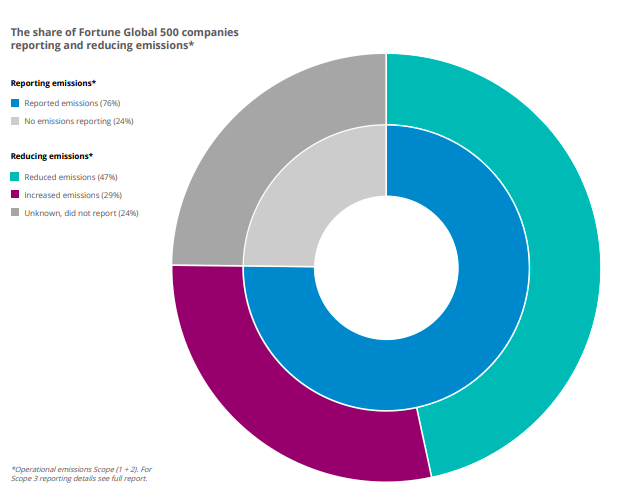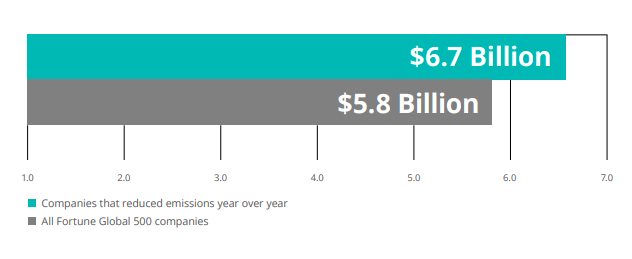Carbon accounting is the process of measuring and tracking the amount of greenhouse gas emissions produced by a company. Through carbon accounting, businesses can better understand the scale of their emissions and where they come from. This makes it easier to implement strategies for carbon reduction and removal and to communicate the results with stakeholders and governments clearly and accurately.
Carbon accounting is essential in the fight against climate change and for managing and mitigating carbon footprints. The practice began in the early 2000s and has been helping companies identify hotspots, allowing them to target their carbon reduction efforts with high-impact actions.
Accurately tracking emissions makes it easier and more efficient to reduce a company’s greenhouse gas emissions. You cannot manage what you cannot measure.
Aside from helping to efficiently reduce a company’s greenhouse gas emissions, carbon accounting can help with a variety of other crucial factors when it comes to reducing a carbon footprint.
Carbon accounting can help with compliance, legal requirements, and environmental regulations regarding emissions, including:
Carbon accounting can also aid in maintaining the standards and guidance set out by Greenhouse Gas Protocol. This organization has established an internationally recognized framework to help measure and manage greenhouse gas emissions used by more than 92% of Fortune 500 companies.
Keeping up with these carbon accounting standards and regulations can help businesses achieve corporate sustainability initiatives and goals, as carbon accounting can provide data to inform strategies for reducing emissions. This can also enhance a company’s reputation and transparency by demonstrating a commitment to environmental responsibility.
Having accurate carbon accounting can also assist in identifying and managing risks associated with climate change, such as regulatory changes, market shifts, and physical impacts, helping to future-proof businesses.

There are two important components required for carbon accounting: data collection and data processing. Businesses need to collect data in a comprehensive and detailed manner and then process that data using sound methodologies.
A systematic approach to measure, track, and report greenhouse gas emissions is required for good carbon accounting. These are the basic steps to achieve that:
1. Deciding what to include
It is important to establish the boundaries of a company by determining which parts should be included in the value chain carbon accounting process. This could mean a company’s subsidiaries and joint ventures as well. It is also important to decide which emission sources should be included, categorizing emissions into Scope 1, 2 or 3. It is recommended that all three scopes be included to gain a more comprehensive picture of both direct and indirect emissions.
2. Gathering data
A company should then collect data on all activities that cause greenhouse gas emissions. For an accurate measurement of emissions, all three scopes should be included. This means emissions from both direct sources controlled by the company and indirect sources. For example, this should include purchased electricity or gas and emissions from a company’s entire value chain.
3. Accurate calculating
Using the data collected, businesses should apply spend-based emission factors, working out the average greenhouse gas emission per unit of financial expenditure.
4. Record keeping
It is essential to keep detailed records of all data sources, calculations, and methodologies used to maintain consistency in tracking and reporting. Data management systems should be used to store and organize data efficiently.
5. Verification
Businesses need to ensure that the data collected is of a high quality. It is important to conduct regular internal audits, use third-party verifiers to review and validate the data, and keep a record of the audit trail.
6. Reporting
Compile the verified data into detailed reports that can be shared with stakeholders and regulating bodies. These can be shared internally to provide insights for decision-making as well as externally for annual reports.
7. Using the information
It is important to then act on the data, to continuously monitor it to identify and address any gaps or inaccuracies, and to make changes to systems to mitigate emissions.
Measuring emissions is a critical component of carbon accounting, allowing businesses to quantify the amount of greenhouse gasses they are responsible for emitting into the atmosphere. The measurement process involves direct measurement, estimation, or calculation based on activity data and emission factors.
Direct measurement
Emissions can be directly measured using specialized equipment installed at the source. This is common in industries with significant point sources of emissions, such as power plants or manufacturing facilities.
Estimation using emission factors
In cases where direct measurement is not feasible, emissions are estimated by collecting activity data and applying emission factors. Activity data refers to the level of activity that generates emissions, such as fuel consumption, electricity usage, or production volumes.
Material balance method
In industrial settings, emissions can be estimated using the material balance approach, which involves tracking the input and output of materials in a process and accounting for the emissions produced.
Modeling and simulation
Advanced computational models can simulate emissions from various sources based on inputs like fuel characteristics, operational parameters, and environmental conditions. This is particularly useful for complex or diffuse emission sources, such as agricultural activities or large transportation networks.
Accounting for Scope 2 and 3 emissions
Emissions from electricity, heating, or cooling purchased by a company are typically calculated based on the amount of energy consumed and the emission factor associated with the energy provider. Learn more about accounting for Scope 2 and 3 emissions here.
Establishing finance-grade carbon accounting data involves creating a robust and reliable system for measuring, verifying, and reporting greenhouse gas emissions that meet stringent standards of financial reporting. A high level of accuracy and credibility is not only a requirement but also crucial for successfully integrating carbon data into financial statements, investor communications, and regulatory disclosures.
To establish finance-grade carbon accounting data, a company has to:
Provide detailed disclosures in financial reports, including the methodology, scope, and assumptions used in carbon accounting, as well as the results of third-party verifications.
Calculating greenhouse gas emissions is a complicated multi-step process. The process typically follows standardized methodologies, such as those set out by the Greenhouse Gas Protocol. Once the scope of emissions sources has been defined and categorized and all data activity has been collected, a company has to use emission factors to convert activity data into greenhouse gas emissions.
Emission factors represent the average emissions per unit of activity (e.g., kg CO2 per liter of diesel). They are used to estimate the amount of greenhouse gasses emitted into the atmosphere from various activities, based on the quantity of a given material or energy consumed.
Sources for emission factors can come from:
Greenhouse gas emissions equal the activity data multiplied by the emission factor.
Carbon accounting outputs are the results and insights that come from the process of measuring, calculating, and reporting greenhouse gas emissions. These outputs are important for businesses to understand their carbon footprint, set reduction targets, and comply with regulatory requirements.
Outputs from carbon accounting can include:
A company’s carbon footprint
This is the entire calculated amount of greenhouse gasses produced by a company, activity or product, both directly and indirectly. This is normally tallied in metric tons of CO2 equivalent. A comprehensive carbon footprint includes emissions across all three scopes.
Greenhouse gas emissions inventory
This is the complete account of all greenhouse gas emission sources from a company. It should include emissions data for each source, categorized by scope, and often broken down by department, facility, or operational area.
An inventory provides a baseline for tracking emissions over time, identifying key sources of emissions, and setting reduction targets.
Emissions reductions targets
These are detailed, clear-cut goals set by a company to reduce its emissions over a defined period of time. These goals can aim for a total reduction of emissions or a reduction in emissions per unit of output.
Emissions reports
These are formal documents that present a company’s carbon management strategies and total greenhouse gas emissions. Often these documents are used for regulatory compliance, investor relations, and public transparency. They can take the form of regulatory reports, voluntary reports, or internal reports.
Benchmarking and performance metrics
These are detailed reports of a company’s emissions compared to competitors, industry peers, historical data, or targets. These types of reports help businesses understand their relative performance and identify areas for improvement.
Financial reports and cost analysis
These reports assess the financial implications of a company’s carbon emissions, including potential costs related to carbon taxes, cap-and-trade systems, carbon pricing mechanisms, the cost of purchasing carbon credits, and emissions reduction investments. They include reports on carbon pricing impacts and cost-benefit analysis.
Strategic insights and action plans
Insights from carbon accounting can help create strategic recommendations and actionable steps to reduce emissions, enhance sustainability, and improve overall carbon management. These can include:
Compliance and certification
Having an accurate carbon accounting structure can lead to verification that the business meets regulatory requirements and potentially earns certifications related to carbon management. This can also be good for a company’s public image.
Marketing materials
Results from carbon accounting can be utilized in marketing materials and communications that highlight the company’s commitment to reducing its carbon footprint, potentially improving its brand image and customer loyalty.
Stakeholder communications
These same results can be shared with external stakeholders, such as customers, investors, and the public to better educate them on the company’s carbon footprint and sustainability efforts.
Clients of Climate Impact Partners have access to our online dashboard - enabling them to access up-to-date information about their carbon credit purchases and status and meet the increasing requirements for reporting.
There are numerous benefits to carbon accounting, but mostly it can help a business have a comprehensive understanding of its greenhouse gas emissions and be imperative to implementing effective action in reducing those emissions.
The benefits of carbon accounting can include:
Greater public image
Transparent reporting of greenhouse gas emissions and efforts to reduce them can enhance trust among stakeholders, including investors, customers, employees, and the public. Companies that actively manage and reduce their carbon footprint can differentiate themselves in the market as leaders in sustainability, which can attract environmentally-conscious consumers and investors.
Regulatory compliance
Carbon accounting helps businesses comply with national and international regulations related to greenhouse gas emissions. Many countries have established mandatory reporting requirements, carbon taxes, and cap-and-trade systems that necessitate accurate emissions measurement.
Managing risk
By understanding their carbon footprint, businesses can better manage risks associated with climate change, such as regulatory changes, physical impacts caused by extreme weather events, and shifts in the market.
Cost savings
Carbon accounting often reveals opportunities for improving energy efficiency, which can lead to significant cost savings on energy bills. Identifying and reducing waste and inefficiencies in operations can lower operational costs and reduce the consumption of raw materials.
Stakeholder engagement
Investors increasingly consider environmental, social, and governance (ESG) factors in their decisions. Effective carbon accounting can improve a company’s ESG rating, making it more attractive to investors. Clear and accurate reporting of carbon emissions demonstrates a commitment to sustainability, which is increasingly demanded by stakeholders.
Strategic planning and actions
Carbon accounting provides data that can inform strategic decisions, such as investments in renewable energy, energy efficiency projects, or supply chain optimization.
Greater operational efficiency
Businesses can use carbon accounting data to set realistic and measurable emissions reduction targets, aligning with global goals such as the Paris Agreement.
Employee engagement
Employees are increasingly interested in working for companies that prioritize sustainability. A strong commitment to carbon accounting and emissions reduction can enhance employee morale and retention.

Carbon accounting, while essential for managing and reducing greenhouse gas emissions, presents several challenges. These challenges can arise from technical, organizational, and regulatory complexities. Some of these can include:
Including all emissions
This is a fairly common mistake with carbon accounting. Businesses will fail to include indirect emissions, product life cycles, or even employee commuting. Doing so can mean that emission hotspots are overlooked and can hinder mitigation efforts.
Using one reporting methodology
Because companies can be quite large and carbon accounting can and should take place over many years, different methodologies are often used. This makes it very difficult to accurately monitor progress over time or compare emissions reductions across different parts of the company. To counter this, only one methodology should be used.
Complying with evolving regulatory requirements
Regulatory frameworks are constantly adapting and changing as new scientific evidence becomes available. It is vital for businesses to be on top of these changes to avoid not only fines and penalties but also reputational damage.
Engaging stakeholders
Carbon accounting is an enormous endeavor, and it is important to include all stakeholders, employees, suppliers, and investors at every level of the company. This can be done by effectively communicating sustainability goals and achievements to create a meaningful dialogue.
Including product life cycle emissions
Many businesses forget to include emissions from the entire life cycle of their products and instead focus only on the emissions from their direct operations. Specifically including life cycle emissions can lead to a more complete understanding of a company’s total carbon footprint.
Costs and resources
Creating a detailed carbon accounting framework can be a costly process, especially for small and medium-sized businesses. Costs to factor in can include new software, staff training, data collection, and third-party verification. Carbon accounting can be quite resource intensive and require skilled personnel, which may be scarce in some companies.
Maintaining transparency
Ensuring that the carbon accounting process is transparent and credible can be difficult, especially when dealing with complex supply chains and indirect emissions. One way to address this is to obtain third-party verification for all carbon accounting practices.
Incorporating carbon accounting into business processes
Integrating carbon accounting data with other business systems (e.g., financial reporting, supply chain management) can be technically challenging and require a bespoke touch. As well, there may be some resistance from within the company when attaching carbon accounting into existing business processes. Again, communication and transparency can be key to dealing with this.
Having the latest technology
Implementing and maintaining the necessary technology for carbon accounting, such as advanced monitoring systems, software platforms, and data analytics, can be technically challenging.
Carbon accounting is extremely effective in the fight against climate change. Without the valuable data provided by these frameworks, businesses would not be able to set reduction goals, monitor progress, and create efficient strategies.
Microsoft implemented a successful and extensive carbon accounting strategy while pledging to become carbon negative by 2030. The tech giant has been able to communicate its progress while accurately measuring and mitigating its emissions. Learn more about our partnership with Microsoft here.
Google is another leader in the sustainability space, providing annual reports to investors and stakeholders showcasing their progress to becoming carbon-free, thanks to carbon accounting.
Apple has been able to use carbon accounting to track emissions across its entire supply chain and product life cycle. Because of this, Apple will likely become carbon-free by 2030.
Carbon accounting will only become more vital as organizations and businesses worldwide take significant steps towards reaching net zero and carbon neutrality. Achieving these goals will not be possible without standardized reporting methodologies and data accuracy. The challenge for future carbon accounting will be to maintain both.
Moving beyond Scope 1 and 2 emissions and including indirect Scope 3 carbon accounting will also have to be taken into greater consideration.
Carbon accounting will become an inescapable part of any business practice, and in many ways it already is. Mitigating emissions and fighting climate change cannot be accomplished without due diligence, data, and, of course, accountability.
Simply put, a carbon accounting strategy is a detailed and comprehensive plan put forward by a company to mitigate its greenhouse gas emissions. This plan should set clear reduction goals, track all direct and indirect emissions from a company, and align with global carbon accounting standards.
The strategy should be based on data collection and management, responding to both information gathered by the company and evolving regulatory frameworks.
Carbon accounting is fast becoming a legal requirement in many places in the world and across many industries. Mandatory carbon reporting is now the law in 40 countries, including the UK, several EU member states, North America, Australia, Japan and soon-to-be South Africa.
From 2026, it will be compulsory for large-scale companies to Scope 1 and 2 emissions to investors, thanks to a SEC rule finalized in March 2024.
Carbon accounting and carbon assessment are related concepts but are different in scope, intention, and application. Carbon accounting is the process of measuring, recording, and reporting a company’s greenhouse gas emissions. It covers a company’s operations, including direct and indirect emissions, otherwise known as Scope 1, 2 and 3. Carbon accounting can be used for regulatory compliance, sustainability reporting, and setting emissions reduction targets.
Whereas carbon assessment is the broader evaluation of the carbon footprint of a specific product, process, event, or entire organization. Carbon assessments are used to inform strategic decisions, such as product design, supply chain management, and sustainability initiatives. They help businesses understand the carbon implications of different choices and identify the most effective ways to reduce their carbon footprint.
Both have the same aim of mitigating greenhouse gasses, carbon accounting is focused on quantifying and reporting emissions, while carbon assessment is a broader evaluation.
Both greenhouse gas accounting (GHG accounting) and carbon accounting are methods used for measuring and managing emissions, however they slightly differ in scope and focus. GHG accounting focuses on the measuring of all types of greenhouse gasses, this includes carbon dioxide, methane, nitrous oxide, fluorinated gasses, and water vapor (indirect in some cases). The purpose of this type of accounting is to have a comprehensive understanding of all types of gasses that cause climate change.
Carbon accounting, however, focuses solely on the emissions caused by carbon dioxide. This type of accounting is typically used to help companies reach carbon neutrality, or in discussions around carbon offsets and carbon credits.
Carbon accounting should be done regularly, typically on an annual basis, to align with financial reporting and sustainability goals. This frequency allows companies to track progress, comply with regulations, and provide updates to stakeholders.
However, some companies may choose to conduct carbon accounting more frequently, such as quarterly or biannually, particularly if they are in sectors with high emissions, have aggressive sustainability targets, or need to comply with specific reporting requirements.
Some of the most widely used methodologies and approaches for carbon accounting include: Greenhouse Gas (GHG) Protocol; ISO 14064; science-based targets; life-cycle assessment (LCA); carbon footprint calculation tools; and environmental product declarations (EPD). Each of these carbon accounting methods helps ensure accuracy by standardizing how emissions are measured, reported, and verified, making it easier for companies to manage their carbon reduction efforts and meet regulatory or voluntary climate goals.
The main drivers of carbon accounting include regulatory compliance, investor and stakeholder pressure, and corporate sustainability goals, all of which push companies to track and reduce emissions. Carbon accounting helps businesses reduce costs by identifying energy inefficiencies, while also enhancing market competitiveness and brand reputation. It is essential for managing climate-related risks, complying with carbon regulations, and accessing sustainable finance. Additionally, businesses are motivated by the global need to mitigate climate change and align with international agreements like the Paris Agreement. Overall, carbon accounting supports both environmental responsibility and long-term business success.
Decarbonization is crucial to safeguarding the future of our planet, as it ...

Carbon neutral and net zero are two terms often used interchangeably, but t...

Understanding scope emissions helps companies identify their environmental ...
